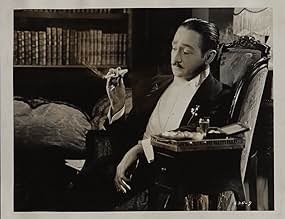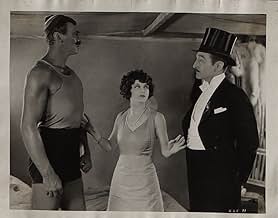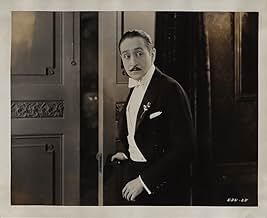I had no idea in the 1990s when I held a three-year film option on Paul Morand's collection of stories, OPEN ALL NIGHT, that there had been a silent film made of one of them by Paramount in 1924! Isabelle Gallimard did not tell me, and probably she did not know either. I came across the existence of this film by chance recently, when its availability on DVD came to my notice. It is listed on IMDb as ONE PARISIAN NIGHT, but its original title in the USA was the same as the book from which it comes, OPEN ALL NIGHT. It was directed by Paul Bern (1889-1932), who married Jean Harlow in 1932 but committed suicide shortly thereafter (a mysterious incident, never properly explained). Although the quality of the print is good, the film itself is not enjoyable or impressive, though it has some interest and some good points. This film is based upon only one of the stories in the book, and by no means the most interesting one. It is the story of the wife who flirts with the cyclist at the velodrome. None of the characters as portrayed elicits the slightest sympathy in the viewer, and the mannered poseur of a husband as played by Adolphe Menjou, obviously believing himself to be ever so sophisticated, is as cold as ice and deeply repellent. There is nothing whatever amusing about this film, and it is deeply depressing. There is an interesting establishing shot near the beginning, purchased from some Paris supplier who filmed the real thing, of the Rotonde in Montparnasse. I had never seen the 1920s Rotonde in moving film before, with people and cars going by. The Rotonde is still there, of course, though somewhat changed. In this film, the glowing lights of upstairs show just how important that part of the establishment was for dining in the 1920s, as was the case also at the Coupole after it was opened in 1927 (after this film was made) The Paris Velodrome as shown here is a mock-up in a Hollywood studio with a much-reduced cycle track and only a few cyclists taking part in an important race, but it manages to be more or less accurate otherwise. The real Paris Velodrome was, as many will know, later to be the depositing place for thousands of Jews rounded up by the Vichy police for transport to Germany and extermination in the death camps. So the Velodrome is not a happy thought today. But in the 1920s, sporting enthusiasts like Ernest Hemingway were there as often as they could be. It was tremendously fashionable at that time to go to the indoor cycling races, and it was one of the trendy things to do in an age before televised sport. As for the society swagger, those men in silk top hats and white tie are really too, too much. Thank God one missed all that. And the simpering, spoilt society women were even more appalling back then. Some of the moving shots of the cyclists racing are exciting, and the film picks up a bit towards the end, having been tedious and boring for the first half. However, it is worth a miss.




















